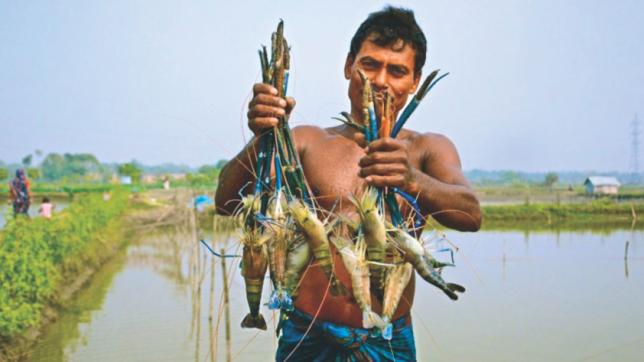Shrimp exporters stare at bleak future

Shrimp processors finished the first half of fiscal 2018-19 amid lower export receipts than a year earlier, with a revival in fortunes progressively looking unlikely in the second half, said exporters yesterday.
“We have been facing the blow of soaring production of vannamei shrimp in other countries since June 2017,” said Md Rezaul Haque, managing director of Modern Seafood Industries, one of the top exporters of frozen fish and shrimp.
He operates two firms, which exported Tk 335 crore worth shrimp and frozen foods in 2017.
The companies are yet to calculate the total export receipts of 2018.
“But roughly, it appears that our exports have fallen 50 percent in 2018,” said Haque, also a director of the Bangladesh Frozen Foods Exporters Association (BFFEA).
Given the current situation, it appears that chances of recovery in exports are unlikely, he said.
Processors said production and exports remain low during the January-March period as the season begins from April and continues until October, just in time for the holiday season in the West.
Shipment will be very low in the months until April as buyers will run their business with existing orders and stocks, said Md Tariqul Islam Zaheer, managing director of Achia Sea Foods.
Exports had been fine until August of last year, he said.
Prices began to fall in the later months in the face of ample production of vannamei shrimp, particularly in India.
Production was so high that some exporters in India shipped the low-priced shrimp on credit to their buyers, said Zaheer, also a BFFEA director.
Demand for shrimp was also affected by devaluation of the British pound and fallout of the US-China trade war, he added.
Grown by more than eight lakh farmers on 2.72 lakh hectares area in Bangladesh, the brackish and freshwater shrimp is one of the main livelihoods of thousands of farmers in the southwest coastal belt.
Export receipts from shrimp, which was once the second biggest export earner after garments, fell for the fourth consecutive year in fiscal 2017-18 to $408 million, the lowest since fiscal 2011-12, according to the Export Promotion Bureau.
In the face of consistent low prices in the global market, the local market has emerged as a cushion for farmers in recent years, thanks to rising income and purchasing capacity of people.
Shipments slumped 21 percent year-on-year to $189 million in the first five months of the fiscal year.
Exports dropped in terms of prices but not in terms of quantity, according to Zaheer.
The low price of vannamei is the main reason behind the slumping demand for locally grown black tiger, said Kazi Belayet Hossain, senior vice-president of BFFEA.
The prices of vannamei are $2 less than the prices of black tiger, he said.
He went on to urge the government to allow vannamei cultivation in the country and double the cash subsidy for shrimp and fish exports to 20 percent.
At the same time, source tax on export proceeds should be reduced to 0.25 percent in line with garment, he said.
“This support is necessary to retain exports,” said Hossain, also the managing director of Sobi Fish Processing Industries.
